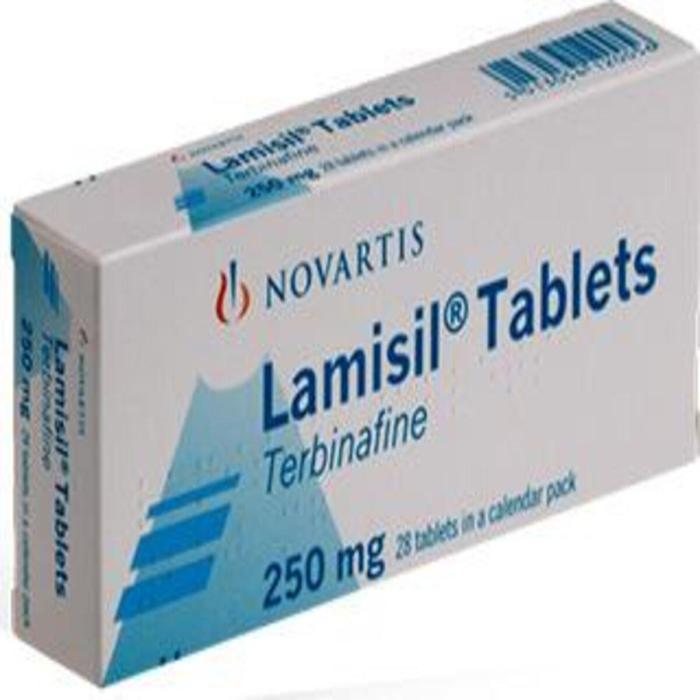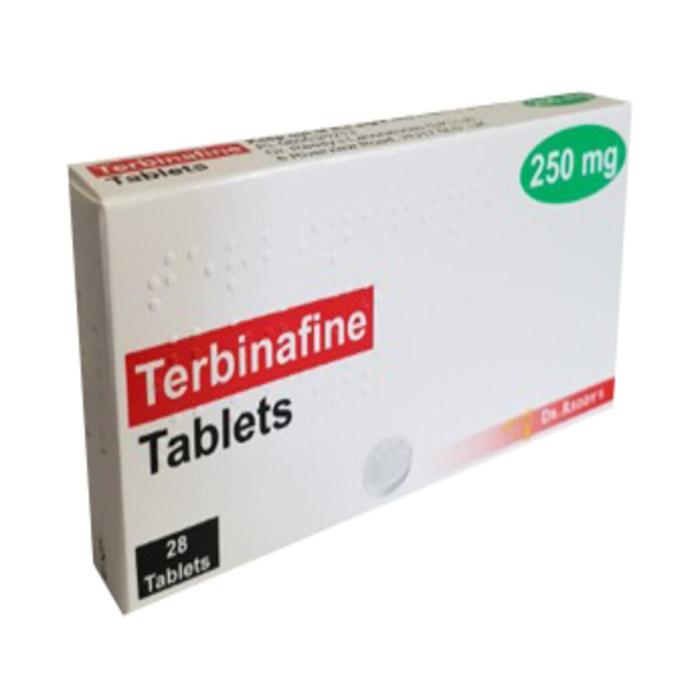Terbinafine tablets are a powerful antifungal medication used to treat a wide range of fungal infections, from athlete’s foot to nail fungus. They work by inhibiting the growth of fungi, effectively combating these pesky infections. This medication is often prescribed for common skin conditions like ringworm and jock itch, offering relief and a path to recovery.
Understanding the mechanism of action of terbinafine tablets is crucial for understanding its effectiveness. It specifically targets an enzyme called squalene epoxidase, which is essential for fungal cell membrane synthesis. By inhibiting this enzyme, terbinafine disrupts the fungal cell membrane, ultimately leading to the death of the fungus.
Alternative Treatments
Fungal infections can be effectively treated with various antifungal medications. While terbinafine is a common option, several alternative treatments are available, each with its own set of benefits and drawbacks. Choosing the right treatment depends on factors like the type of infection, its severity, and the individual’s health status.
Topical Antifungal Medications
Topical antifungal medications are applied directly to the infected area and are often the first-line treatment for superficial fungal infections like athlete’s foot, jock itch, and ringworm. These medications come in various forms, including creams, lotions, powders, and sprays.
- Clotrimazole: A broad-spectrum antifungal that effectively treats various fungal infections. It is available over-the-counter (OTC) and by prescription.
- Miconazole: Another broad-spectrum antifungal available OTC and by prescription. It is effective against a wide range of fungi.
- Ketoconazole: This antifungal is available by prescription and is effective against various fungal infections, including those resistant to other medications.
- Terbinafine: While terbinafine is typically used orally, a topical form is also available for treating certain fungal infections.
- Butenafine: This antifungal is available OTC and by prescription and is effective against various fungal infections, including athlete’s foot and ringworm.
Topical antifungals are generally safe and well-tolerated. However, some individuals may experience side effects like skin irritation, redness, or itching.
Oral Antifungal Medications, Terbinafine tablets
Oral antifungal medications are taken by mouth and are typically used for more severe or widespread fungal infections. These medications work by targeting the fungus’s growth and reproduction processes.
- Fluconazole: This antifungal is available by prescription and is effective against various fungal infections, including yeast infections, ringworm, and athlete’s foot. Fluconazole is often used for long-term treatment of chronic fungal infections.
- Itraconazole: This antifungal is available by prescription and is effective against various fungal infections, including ringworm, athlete’s foot, and onychomycosis (fungal nail infection). Itraconazole is often used for treating fungal infections that are resistant to other medications.
- Posaconazole: This antifungal is available by prescription and is used for treating severe or life-threatening fungal infections. It is often used for patients with weakened immune systems.
Oral antifungals are generally safe and effective, but they can cause side effects like nausea, vomiting, diarrhea, and liver problems.
Factors Influencing Treatment Choice
The choice of treatment for a fungal infection depends on various factors, including:
- Type of fungal infection: Different antifungal medications are effective against different types of fungi.
- Severity of the infection: Superficial infections can often be treated with topical medications, while more severe infections may require oral medications.
- Location of the infection: Some antifungal medications are more effective for treating infections in specific areas of the body.
- Individual’s health status: Some individuals may have underlying medical conditions that affect their ability to tolerate certain medications.
- Pregnancy and breastfeeding: Some antifungal medications are not safe for pregnant or breastfeeding women.
Patient Education and Counseling

This leaflet provides information about terbinafine tablets, including their uses, dosage, side effects, and precautions. It is important to read this information carefully and discuss any questions you may have with your healthcare provider.
Terbinafine Tablets: What You Need to Know
Terbinafine tablets are an antifungal medication used to treat fungal infections of the skin, nails, and hair. It works by stopping the growth of fungi. Terbinafine tablets are available by prescription only.
Dosage and Administration
The dosage of terbinafine tablets will depend on the type and severity of your infection, as well as your age and overall health. Your healthcare provider will determine the appropriate dosage and duration of treatment for you. It is important to take terbinafine tablets exactly as prescribed. Do not take more or less than the recommended dosage, and do not stop taking the medication before the prescribed course is complete.
Possible Side Effects
Like all medications, terbinafine tablets can cause side effects. However, not everyone experiences side effects. Some common side effects include:
- Headache
- Nausea
- Diarrhea
- Stomach pain
- Loss of taste
- Skin rash
- Itching
More serious side effects are rare, but they can occur. If you experience any serious side effects, such as:
- Yellowing of the skin or eyes (jaundice)
- Dark urine
- Unusual bleeding or bruising
- Severe stomach pain
- Seizures
- Difficulty breathing
It is important to seek medical attention immediately.
Precautions
Before taking terbinafine tablets, it is important to inform your healthcare provider if you:
- Are pregnant or breastfeeding
- Have liver or kidney problems
- Have any allergies to medications
- Are taking any other medications, including over-the-counter medications and herbal supplements
It is also important to avoid alcohol while taking terbinafine tablets, as it can increase the risk of liver damage.
Questions Healthcare Professionals Should Ask Patients
Before prescribing terbinafine tablets, healthcare professionals should ask patients about:
- Their medical history, including any pre-existing conditions
- Any medications they are currently taking
- Any allergies they have
- Their pregnancy status or if they are breastfeeding
- Their alcohol consumption habits
- Their understanding of the medication and its potential side effects
- Their expectations for treatment
Counseling Strategy to Address Patient Concerns
It is important to counsel patients on the importance of completing the prescribed course of treatment, even if they start to feel better. Stopping treatment early can lead to a recurrence of the infection. Patients should be encouraged to ask questions and express any concerns they may have.
Research and Future Directions: Terbinafine Tablets

Terbinafine tablets have been a mainstay in the treatment of fungal infections for decades, and ongoing research continues to refine our understanding of its efficacy and safety. Researchers are actively exploring new avenues to enhance the treatment of fungal infections, leveraging advancements in drug delivery, combination therapies, and personalized medicine.
Recent Research Findings
Recent research has shed light on the efficacy and safety profile of terbinafine tablets in various clinical settings. Studies have confirmed its effectiveness in treating a wide range of fungal infections, including onychomycosis, tinea pedis, and tinea corporis. Notably, research has also investigated the potential for terbinafine to be used in combination with other antifungal agents to enhance treatment outcomes.
Ongoing Research Efforts
Ongoing research efforts are focused on improving the treatment of fungal infections by exploring various avenues.
- Novel Drug Delivery Systems: Researchers are investigating novel drug delivery systems, such as liposomes and nanoparticles, to enhance terbinafine’s bioavailability and improve its therapeutic efficacy.
- Combination Therapies: Combining terbinafine with other antifungal agents, such as itraconazole or fluconazole, is being explored to enhance efficacy and address emerging resistance patterns.
- Personalized Medicine: Tailoring treatment regimens based on individual patient characteristics, such as fungal species and genetic predisposition, is a promising area of research.
Potential Areas for Future Research
Several areas hold significant potential for future research and development related to terbinafine tablets.
- Long-Acting Formulations: Developing long-acting formulations of terbinafine could improve patient adherence and reduce the frequency of administration.
- Prophylactic Use: Exploring the potential for terbinafine as a prophylactic agent to prevent fungal infections in high-risk individuals, such as those with weakened immune systems.
- Resistance Mechanisms: Further investigation into the mechanisms of terbinafine resistance is crucial to develop strategies to overcome resistance and maintain the efficacy of the drug.
Terbinafine tablets offer a valuable treatment option for fungal infections, providing relief and promoting healing. While generally safe and effective, it’s important to consult a healthcare professional before using terbinafine tablets. They can assess your individual needs, determine the appropriate dosage, and ensure you are aware of potential side effects and drug interactions. By understanding the nuances of this medication, you can make informed decisions about your treatment plan and achieve the best possible outcome.
Terbinafine tablets are a common treatment for fungal infections, often prescribed for conditions like athlete’s foot and ringworm. While terbinafine works to combat fungal growth, it’s important to remember that it’s not a treatment for hair loss, which is often addressed by medications like finasteride. If you’re experiencing hair loss, it’s crucial to consult with a doctor to determine the underlying cause and discuss appropriate treatment options.
Always follow your doctor’s instructions regarding terbinafine dosage and potential side effects.